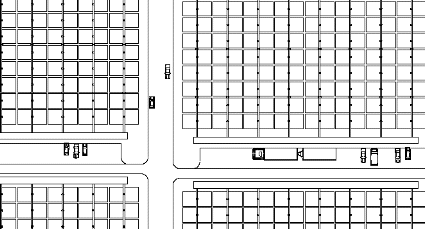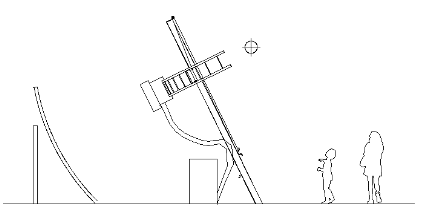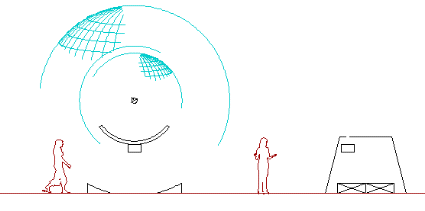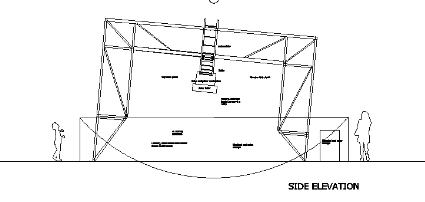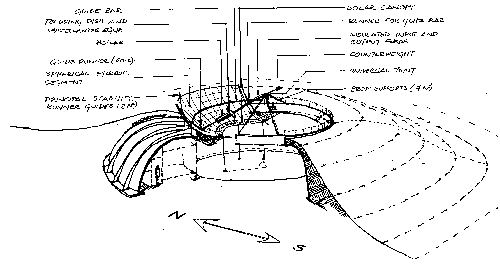|
Segmental
Solar Sphere:
Some potential uses |
|||
|
1:
Power Plant: Efficiency of land usage
Larger mirror bowls could also be installed adjacent to country properties allowing continued heating: This will become particularly important for listed and other historic buildings that cannot easily be insulated but which generally require some form of heating to both prevent decay and allow comfort for the residents. When combined with thermal storage facilities, a bowl segment could supply all winter and summer hot water to a residence. Larger segments could supply all space heating. |
Renewable Energy without the hot air, notes (page 178) that current technologies can produce 15 watts/m² in deserts: This is the same rate as the lower bound limit for this technology when used in Kenya, Somalia or Ethiopia
Using
current averaged consumption of 16 terawatts with no consumption
reduction, a 'world field', for instance in Kenya (if one of four),
would require at most half of the country (Kenya has 582,646 km²)
and at best less than 10% of the area.
|
||
|
|
|||
|
|
|||
|
The captured in plane energy density of such a system alligned to a winter axis and when used for thermal power supply (ie slightly more production in Winter than in Summer) is unlikely to exceed 20 watts/m² if the most economic balance is used: If aligned for the Summer, the density is higher. When optimal spacing is accounted for (at a winter maximum solar angle of 17 degrees), the spacing of lines becomes a multiple of 5 or so for every in plane metre: Thus the potential UK density falls to about 4 watts/m². This could be 'hedgerow spacing'. Significantly higher densities are possible under other circumstances [refer to internal report 80014/r0401]. |
|||
|
|
|||
|
3:
Equatorial Cooking |
|
||
|
|
|||
|
4:
Communal Drying/Cooking/Autoclave/Sterilization |
|
||
|
|
|||
|
5:
Other |
|
||
|
All rights reserved. All images, photographs and other image types copyright of the author. Except for the quotation of brief passages in criticism, no part of this publication may be reproduced, stored in a retrieval system, or transmitted, in any form or by any means, electronic, mechanical, photocopying, recording or otherwise, without the prior permission of the publishers. The Author asserts his moral right to be identified as the author of this work. Some portions of this work contain patented material. Some of the features described are patent pending, some are subject to registered design and/or other forms of intellectual property registration. All photographic images & video on this site are real and unedited. |
|||

